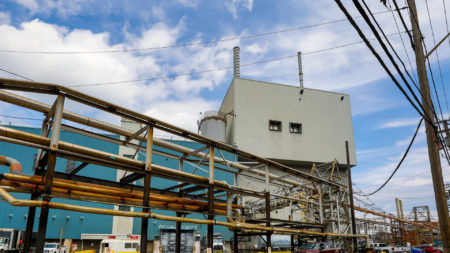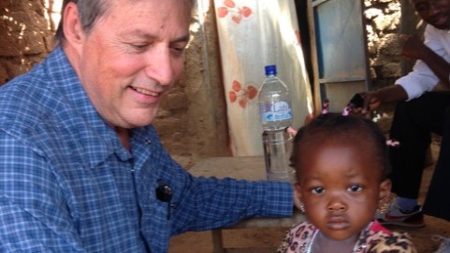Opportunities Leveraged for Valorisation Efforts

Last spring, a number of proactive workers took the initiative to contribute to successful by-product valorisation at the Spent Potlining (SPL) Treatment Plant. Recovered alumina-, bauxite- and refractory-based products are key ingredients in SPL valorisation, and more and more workers are finding new opportunities to optimise their use. Taken together, these initiatives are being leveraged to provide benefits on multiple levels.
How does the SPL treatment plant reclaim by-products?
SPL is a hazardous material produced when smelting pots are decommissioned. The purpose of the SPL treatment plant is to use SPL as a raw material, extracting contaminants to render it non-hazardous and, eventually, valorising it. “To reclaim SPL, we have to treat it with alumina-rich additives,” said Samuel Dolbec, By-Product Valorisation Coordinator. “Recovering certain materials is therefore a great opportunity not only to save on purchasing at the SPL plant and on by-product disposal costs at the centres where they are generated but also to minimise the environmental impact of our operations.”
The team highlighted the involvement of Marc-André Séguin, from the Montreal-based commercial team, who worked incredibly hard on research and customer relationships. “Our customers are normally cement producers, with whom we agree on product specifications,” said Dolbec. “There are chemical and physical criteria that must be met (granulometry, humidity, etc.).”
“Recovered alumina remains a high-quality product, and although it is no longer useful for our processes, it can very well be reused for SPL valorisation,” said Clarence Tremblay, Valorisation Coordinator at the SPL treatment plant. “However, there are certain parameters that the recovered material must fit to ensure compatibility.”
“Not mixing materials allows them to be valorised better,” continued Dolbec. “The cleaner and dryer it is, the better. Separation at the source is a principle that applies as much in industrial valorisation as in household recycling.”

Recovered alumina, bauxite and refractory by-products are key ingredients in SPL valorisation.
Initiatives for better valorisation
Recent weeks have seen a number of achievements in SPL valorisation. These include:
- “Jean-Philippe Minier, Maintenance Planner at Vaudreuil Works, noticed that during transportation, unused alumina was building up on conveyors and in railcars,” said Jasmyn Brassard, Operations Supervisor at Vaudreuil Works and Port Facilities and Railway Services. “During cleaning operations, all this material was being collected and sent to the landfill. It was no longer useful to them, but for us at the SPL plant, it’s the exact raw material that we’re looking for. It was a perfect fit!” This realisation also led to the idea of recovering concrete from refractory furnaces. Once the product specifications have been studied, this initiative will be implemented during the next major shutdown at the Calcination Centre.
- Another achievement came from the Hydrate Products Plant. Francis Larouche, Process Engineer, noticed a surplus in railcars and got the SPL plant team involved in recycling the materials that could meet their customers’ needs. Thanks to this initiative, 15 tonnes of hydrate and 120 tonnes of fine bauxite dust will be recovered from warehouses.
- At Alma Works, Hélène Boivin, Process Technician and Refractory Lead, Technical Services, took the initiative to contact the SPL plant about recovering furnace refractory bricks after the plant’s anode baking furnaces were refurbished.
- At the Roberval and Saguenay railway, Martin Dufour, Maintenance Supervisor, observed that during railcar maintenance, hydrate and alumina was getting stuck in the chutes during transportation. This material will now be recovered, rather than sent to the landfill.
- After upgrades to some equipment, Laurence Larocque, Process Engineer at Elysis, contacted the SPL plant team to arrange for them to make use of the leftover refractory and alumina.
- At Port Facilities, the way materials are handled leads to a certain amount of bauxite and alumina being in contact with the ground and exposed to the elements. An initiative led by Justine Desjardins, Environmental Advisor, will allow us to recover a large amount of these materials for use in valorisation at the SPL plant.
Thanks to the initiatives of these proactive workers, all these products will be saved from the landfill and instead serve as raw materials for the production of Alextra and AL-650 (trade names of SPL plant products) at the SPL plant. Eventually, these initiatives will reduce both landfill fees and the cost of valorised products.
While being interviewed for this article, the SPL plant valorisation team wished to emphasise the rallying force of Samuel Dolbec, who joined the organisation in September 2021. Tremblay and Brassard concluded, “Samuel brings such enthusiasm for seizing valorisation opportunities and always being on the lookout for more. We have really felt a difference since he’s been here.”
Rio Tinto teams in possession of excess refractory bricks or bauxite- or alumina-based products can contact Samuel Dolbec at the SPL Plant. Products that no longer serve their initial purpose can be given a new useful life in valorisation!


